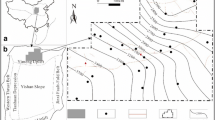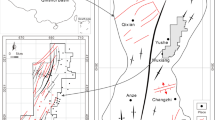Abstract
Coalbed methane exploration in the Western Canada Sedimentary Basin has focused mainly on the foothills and mountain regions of Alberta and British Columbia because of the numerous thick coal seams of suitable rank for thermogenic gas generation. Cumulative coal thicknesses in excess of 50 m and gas contents ranging from 12 to 22 cc/g yield in situ resources estimates of more than 1.2 x109 m3 (42x109 Bcf) per sq. km. These regions are structurally complex and present unique challenges in defining and exploring for the optimum CBM exploration target.
In order to delineate potential reservoir traps, it is necessary to understand the style of deformation and the main structural features where permeability enhancement may occur. The axial regions of anticlines and synclines appear to have the greatest potential. Here, a tensional rather than compressional stress regime exists and the natural fracture system of the coal, (cleating) could be enhanced, resulting in better reservoir permeability. In anticlines the coal gas is trapped in the crest of the structure, where “free” or easily desorbed gas lies in the enhanced natural fracture system, above what would be traditionally defined as the gas/water contact. In synclinal structures, the overpressuring of the reservoir from the adjacent structural limbs may lead to enhanced gas storage within the open fracture system.
In addition to structural complexity, topography and local hydrogeology influence the depth of the reservoir and subsequent reservoir pressure and gas retention within the coal seam(s). Gas desorption experiments completed in the Mist Mountain Formation of southeast British Columbia have demonstrated that in most cases, coals must lie below the regional water table, or be a sufficient distance from subcrop, to ensure that the adsorbed methane is retained within the seam. In synclinal structures, the dipping limbs can provide the hydrological recharge and hydrostatic head to allow overpressured reservoir conditions to exist in the axis of the fold. The regional migration of gas downdip via the coal seam aquifer can also result in the formation of biogenic methane that may enhance the resource potential.
Access this chapter
Tax calculation will be finalised at checkout
Purchases are for personal use only
Preview
Unable to display preview. Download preview PDF.
Similar content being viewed by others
References
Bell, J.S. (1996) In situ stresses in Sedimentary Rocks (part 2): applications of stress measurement, Geoscience Canada, 23,. 135–153.
Dawson, F.M. and Clow, J.T. (1992) Coalbed methane research in southeast British Columbia, in The Canadian Coal and Coalbed Methane Geoscience Forum, February 2–5, 1992, Parksville British Columbia, 57–72.
Enever, J.R.E. and Hennig, A. (1997) The Relationship Between Permeability and Effective Stress for Australia Coals and Its Implications with Respect to Coalbed Methane Exploration and Reservoir Modelling, in Proceedings of International Coalbed Methane Symposium, May 12–17, 1997, Tuscaloosa Alabama, 13–22.
Scott, A.R. (1995) Limitations and Benefits of Microbially Enhanced Coalbed Methane in Proceedings of International Unconventional Gas Symposium, May 14–20, 1995, Tuscaloosa, Alabama, 423–432.
Author information
Authors and Affiliations
Editor information
Editors and Affiliations
Rights and permissions
Copyright information
© 1999 Springer Science+Business Media Dordrecht
About this chapter
Cite this chapter
Dawson, F.M. (1999). Coalbed Methane Exploration in Structurally Complex Terrain. In: Mastalerz, M., Glikson, M., Golding, S.D. (eds) Coalbed Methane: Scientific, Environmental and Economic Evaluation. Springer, Dordrecht. https://doi.org/10.1007/978-94-017-1062-6_8
Download citation
DOI: https://doi.org/10.1007/978-94-017-1062-6_8
Publisher Name: Springer, Dordrecht
Print ISBN: 978-90-481-5217-9
Online ISBN: 978-94-017-1062-6
eBook Packages: Springer Book Archive




